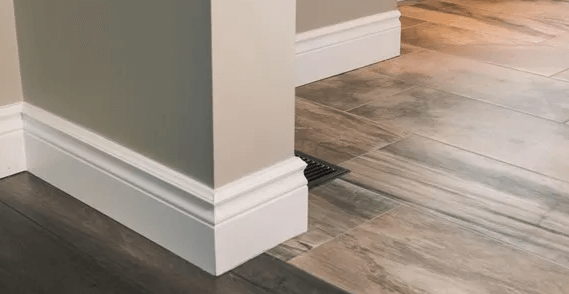“The Best Materials for Durable and Stylish Skirting Boards”

Are you on a quest to add a touch of elegance and durability to your home décor? Skirting boards, often overlooked, play a crucial role in both protecting walls and elevating the aesthetic appeal of any room. This guide will explore some of the best materials for skirting boards that are not only durable but also stylish. Whether you’re renovating your home or building anew, these insights will help you make an informed decision.
Why Skirting Boards Matter
Skirting boards serve multiple purposes in your home. They conceal unsightly gaps between the wall and floor, protect walls from kicks and knocks, and add a decorative touch that can transform the look of a room. Choosing the right material is key to ensuring they last long and continue to look good over time.
MDF Skirting Boards
Versatility and Affordability
Medium Density Fiberboard (MDF) skirting boards are a popular choice due to their versatility and affordability. They can be easily painted to match any color scheme, offering flexibility in design. MDF skirting boards are also uniform in texture, which means they provide a smooth finish.
Easy Maintenance
One of the significant benefits of MDF skirting boards is their easy maintenance. They don’t warp or swell with changes in humidity, making them ideal for areas like kitchens and bathrooms.
Long-Lasting Durability
While MDF is more affordable than solid wood, it doesn’t compromise on durability. These skirting boards can withstand minor impacts and are less prone to splitting or cracking.
Hardwood Skirting Boards
Timeless Elegance
Hardwood skirting boards, made from woods like oak or walnut, offer a timeless elegance that complements both traditional and modern interiors. Their natural grain patterns add a unique character to any room.
Read also Transparent:2zw5wcsa35a= White Flowers
High Durability
Hardwood is one of the most durable materials available for skirting boards. It can endure heavy wear and tear, making it perfect for high-traffic areas.
Easy Customization
Hardwood skirting boards can be easily sanded and refinished, allowing you to change the look of your room without replacing the entire skirting board.
PVC Skirting Boards
Water-Resistant
PVC skirting boards are an excellent choice for areas prone to moisture, such as bathrooms or basements. Their water-resistant properties ensure they won’t rot or warp over time.
Low Maintenance
These skirting boards require minimal maintenance. A simple wipe-down is often enough to keep them looking pristine, making them ideal for busy households.
Modern Look
PVC skirting boards offer a sleek, modern look. They come in various styles and finishes, allowing you to find the perfect match for your home’s décor.
Softwood Skirting Boards
Budget-Friendly
Softwood skirting boards, typically made from pine, offer a more budget-friendly option without sacrificing style. They can be painted or stained to suit your design preferences.
Lightweight and Easy to Install
Softwood is lighter than hardwood, making it easier to handle and install. This can be particularly beneficial for DIY enthusiasts.
Customizable
Like hardwood, softwood skirting boards can be sanded and refinished. This makes them a flexible option for those who like to change their interior design periodically.
Conclusion
Choosing the right material for your skirting boards can significantly impact both the durability and style of your home. MDF offers versatility and affordability, hardwood provides timeless elegance, PVC is perfect for moisture-prone areas, and softwood is a budget-friendly yet stylish choice. Each material comes with its own set of benefits, ensuring there’s an option for every need and preference.




